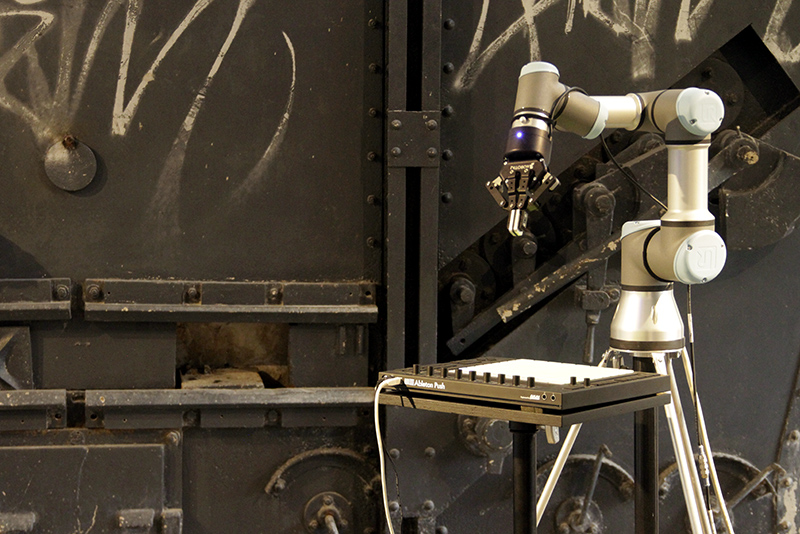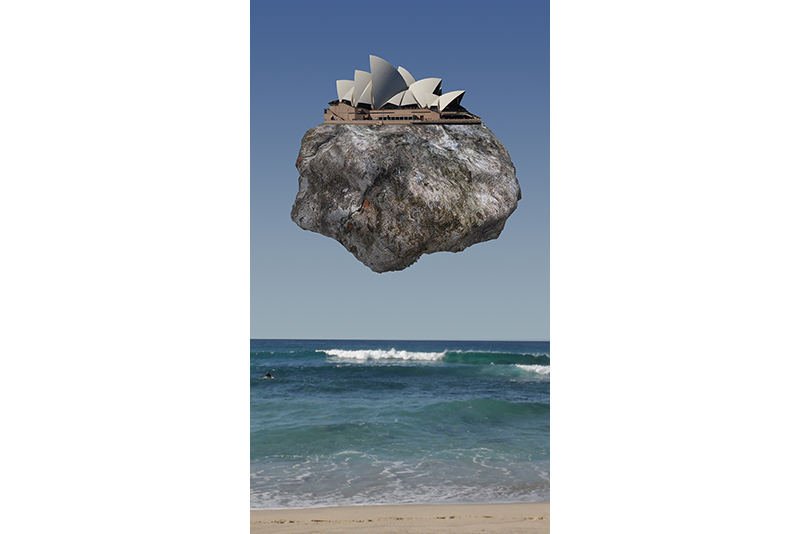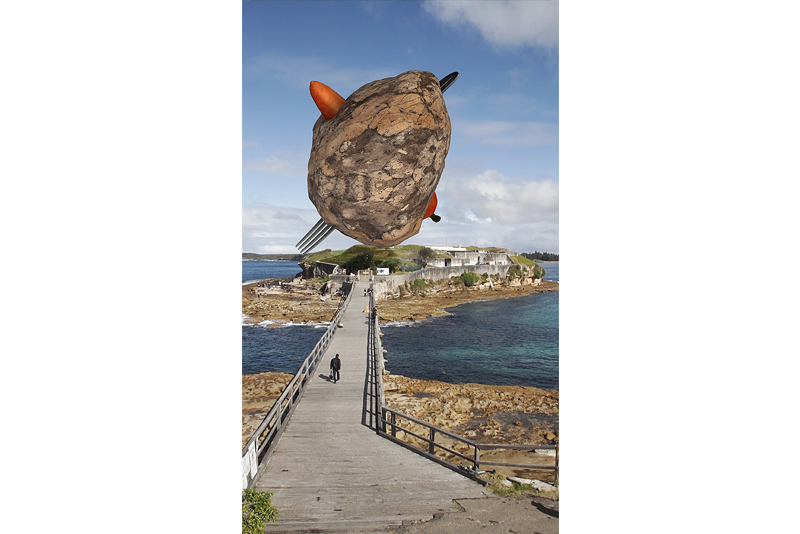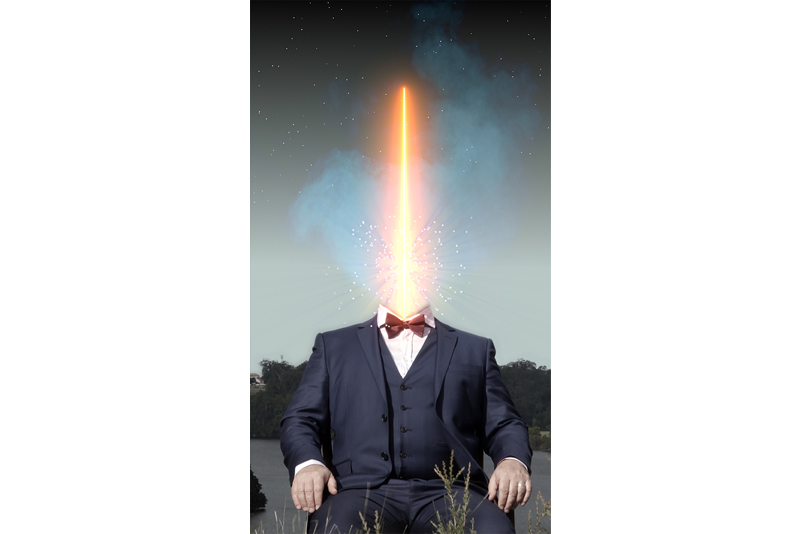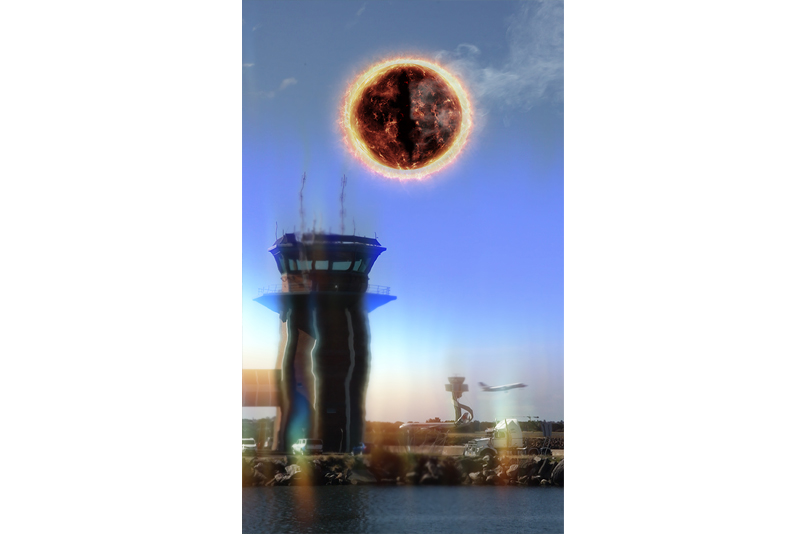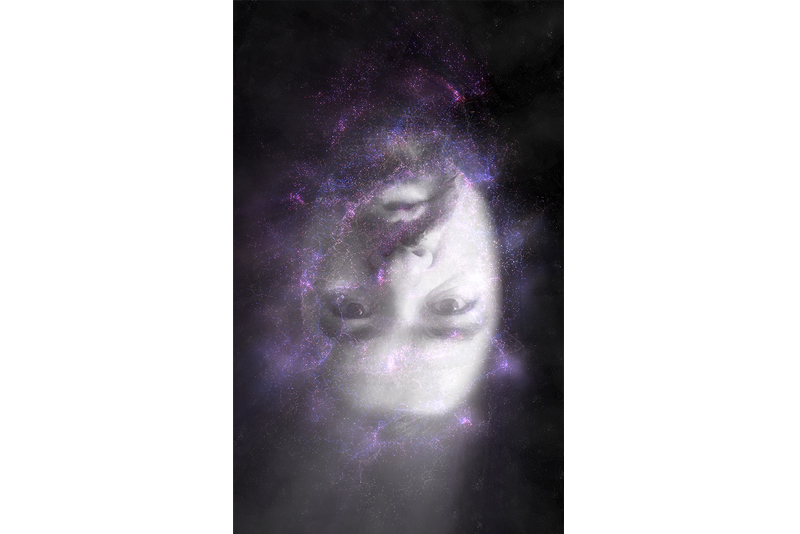Algorithmic Pareidolia, Incinerator Art Space, Willoughby, 2017.
Algorithmic Pareidolia is a series of experimental
video, installation and robotic artworks that explore
how our understanding of reality is increasingly
simulated and automated.
Algorithmic pareidolia, is used in machine learning
by programming computers with deep digital
neural networks, modelled on the brain. Recent
developments in programming neural networks have
provided significant insights into the way humans
and computers ‘think’, exciting both the scientific and
creative communities. For example, in 2015 Google
released its Deep Dream software, a computer
vision program which uses a convolutional neural
network to find and enhance patterns in images via
algorithmic pareidolia. The results are dream-like
and hallucinogenic images, that rival the work of
Giuseppe Archicembalo and Hieronymus Bosch.
This raises the question of whether or not, we can
ever consider artificial intelligence to be creative?
In his new video works Marynowsky combines
art history and popular culture by applying the
techniques of the special effects industry onto
audio visual field recordings of his surroundings.
He asks…. What will Sydney look like in the future?
How does cinematic popular culture influence the
way we understand our surroundings? Will we some
day live in completely simulated worlds?
For the exhibition Marynowsky launches his latest
robotic work Synth-Bot, which investigates how
humans perceive notions of robotic performance
and agency via a robotic arm that creates music,
by playing a synthesiser. In this work Marynowsky
foresees that in the very near future we will pay
money to see robotic bands and musicians.
CECI N’EST PAS…(THIS IS NOT)
An essay on Wade Marynowsky’s Algorithmic Pareidolia
Indicating something that is not there
(THIS is NOT) is a Surrealist ideology present
in the work of painter Rene Magritte titled The
Treachery of Images (Ceci n’est pas une pipe)
(1929)[1]. Wade Marynowsky’s new body of work
examines this notion in relation to the digitally
automated realms of new media and interactive
art in the exhibition Algorithmic Pareidolia as
part of the Willoughby Council’s 2017 Visual
Arts Biennial Kaleidoscope. His works explore
a world not static, but constantly in a state of
flux, the psychological condition of pareidolia
describes a reality in which we see things that
aren’t really there[2][3]. To create and exhibit
experimental digital films and robotic sculpture
intonates that the worlds we regularly inhabit are
ones of hyperreality, accelerated, saturated and
mediated modes of reality.
In a post-modernist, pop-cultural and science-
fiction landscape, Marynowsky explores Jean
Baudrillard’s definition of simulated existence,
one in which there is no defined original and
precession simulacra is dominant [4]. His films
become manipulated montages of carefully
curated but disparately collated original content,
the whole simulation preceding what was
actually filmed. In the films’ movements one
gets the feeling of a mimicked representation of
real and recognisable components. An uncanny
feeling draws one in, all encompassing and
discomforting, but too intriguing to disengage.
Comprised of 7 film montages and a collaborative
work with Julian Knowles featuring a robot
playing a synthesiser, closer inspection of this
exhibition reveals elements disruptive to the
cohesive whole of the artworks.
Deep (Purple) Dream invites its’ audience in
with movements similar to that of a portal.
The trajectory of this experience is slowed
down as the AI-generated visuals propel one
through a magenta-drenched landscape filled
with garish reflections of our own tunnel
vision. Skewed renditions of animals present
the hallucinations of intelligent systems when
trained on too many images to make sense
of. This is machine learning when creatively
overwhelmed, eliciting the same sentiment of
an over-populated and uncanny environment
of an Hieronymus Bosch painting.
This tension is released in Yesterday’s Futurist,
where a man in a suit sits motionless at the edge
of a cliff, his head exploded but his body still
breathing. What remains of his head is an orange
Star Wars lightsaber and a stream of white
particles that constantly emit energy, like
the light at the end of fibre optic cables. As
though a whisper to real life, the wind blows
the jacket open while long grass sways slowly
in the foreground.
Closely connected to this work is When Are You
Coming Up Here? (Blue Rose). Conceived when
watching Surrealist filmmaker David Lynch’s new
Twin Peaks series (2017)[5]
, Marynowsky was
inspired by the tools with which simulated filmic
worlds are now created. In Yesterday’s Futurist,
the artist’s head has exploded; only to reappear
in (Blue Rose) reciting random nonsense. The
frayed edges of fibre optics in Yesterday’s Futurist
emerge as the stars in (Blue Rose), visualising
what Philip Brophy calls particulate cinema,
described as follows,
“ Despite its blatant unreality, this is more
like observing through a microscope the
sub-atomic activity which constitutes
any occurrence of material existence…
Microscopic analysis yields supra-scopic
outcomes: the visualisation of data more
properly refers to how it makes mathematical
probabilities visible.” [6]
The Flying Castle of Bennelong Point features the
iconic Sydney Opera House as a spaceship atop
a large boulder, hovering over Sydney’s beaches
and reversing the tides. Tiny people walk around
this Opera House spaceship, further articulating
the particularity and microscopic nature of the
cinemascape Marynowsky is manipulating.
The Smoking Eye of Mascot depicts a smoking
sun that cannot quit its addiction to aviation
fuel, and so sends heatwaves from the empty
communications tower throughout New South
Wales. Humans are wary that smoking can lead
to disease, but The Smoking Eye inhales and
exhales a dark, seductively beautiful smoke
beneath hazy heatwaves. Again, we recognise
components of intermingled realities, the
essences of which have never really existed.
After taking in these film montages, the mimicry
is repeated in the anthropomorphic nature
of the Synthesiser-Robot (Synth-Bot). There
is sound and movement, but again, THIS is
NOT what we expect. Anthropomorphism is
similar and closely linked to pareidolia. Where
pareidolia can include seeing a face where
there isn’t one, anthropomorphism is attributing
human characteristics or behaviours to non-
human agents, for example robots. Synth-Bot
investigates how humans perceive notions of
robotic performance and agency by playing a
synthesiser, thus creating music. The gestures
are slow moving and familiar at a glance. They
echo the formal bow of a Japanese Samurai; or
the wave of the person you know well and see
often, but whose name escapes you. It performs
the familiar functions of a performer playing
electronic music by pushing buttons and twisting
knobs and sliding faders to manipulate simulated
sounds. Where we recognise the movements
being mimicked by the robotic arm, what comes
out are dark, brooding noises reminiscent of
science-fiction films. As the robot’s repertoire of
compositions grows through machine learning,
so too does the possibility to one day improvise
and perform in a concert setting, as a live agent
performing autonomously.
Algorithmic Pareidolia is one of three Council
curated exhibitions within the Willoughby Visual
Arts Biennial featuring landscapes currently being
traversed by contemporary artists. Over urban
landscapes, coves, cities, cliffs, and cityscapes,
Marynowsky boldly explores that which isn’t
there, but that we largely exist within. THIS is
NOT your regular art exhibition, but you are drawn
in by that which is not, and captured by what
precedes that which is.
[1] Harris, Dr. Beth, and Dr. Steven Zucker. Magritte, The Treachery of Images (Ceci n’est pas une pipe)(1929). Expressionism to Pop Art,
Art between the Wars: The Avante-Garde and the Rise of Totalitarianism: Surrealism. Short video from the KHAN Academy. Accessed 22
August 2017.
[2] Kaleidoscope. Willoughby Visual Arts Biennial. Willoughby City Council. Accessed 22 August 2017.
3] Roth, Ben. DeepDream Algorithmic Pareidolia and the Hallucinatory Code of Perception. The Door of Perception. 13 October 2015.
Accessed 22 August 2017. http://doorofperception.com/2015/10/google-deep-dream-inceptionism/
4] Hegarty, Paul. Jean Baudrillard: live theory. London: Continuum: 2004. ISBN 0-8264-6283-9.
5] Frost, Mark and David Lynch. Twin Peaks, 2017. Internet and Movie Database (IMDb). Accessed 22 October 2017.
Brophy, Philip. Particulate cinema: Visualising data and posthuman physics. Artlink. Vol. 37, No. 1, Mar 2017. p. 45, 48.
Deborah Turnbull Tillman © 2017
